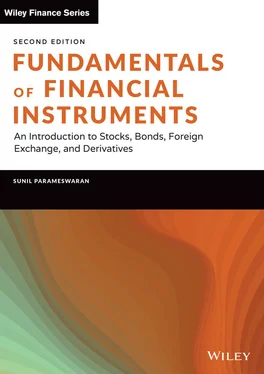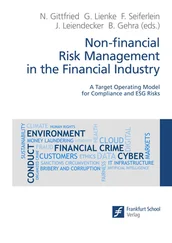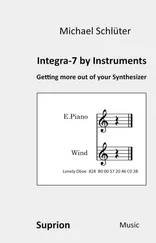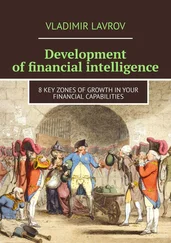Preferred shareholders have restricted voting rights. That is, they usually do not enjoy the right to vote unless the payment of dividends due to them is in arrears. In the event of liquidation of the firm, the preferred shareholders will have to be paid off before the claims of the equity holders can be entertained. Thus, the order of priority of the stakeholders of the firm from the standpoint of payments is bondholders first, followed by preferred shareholders, and then equity shareholders. Within the category of bondholders, secured debt holders get priority over unsecured debt holders. The term preferred arises because such shareholders are given preference over equity shareholders, and not because the shareholders prefer such instruments.
The term foreign exchange refers to transactions pertaining to the currency of a foreign nation. Thus, foreign exchange markets are markets where foreign currencies are bought and sold. The conversion of one currency into another is termed as exchange . A foreign currency is also a type of financial asset, and consequently it will have a price in terms of another currency. The price of one country's currency in terms of that of another is referred to as the exchange rate . Foreign currencies are traded among a network of buyers and sellers, composed mainly of commercial banks and large multinational corporations, and not on an organized exchange. Thus, the market for foreign exchange is referred to as an over-the-counter or OTC market. Physical currency is rarely paid out or received. What happens in practice is that currency is transferred electronically from one bank account to another.
Derivative securities, more appropriately termed as derivative contracts , are assets which confer upon their owners certain rights or obligations, as the case may be. These contracts owe their availability to the existence of markets for an underlying asset or a portfolio of assets, on which such agreements are written. In other words, these assets are derived from the underlying asset. If we perceive the underlying asset as the primary asset, then such contracts may be termed as derivatives, as they are derived from such assets.
The three major categories of derivative securities are:
Forward and futures contracts
Options contracts
Swaps
FORWARD AND FUTURES CONTRACTS
A typical transaction, where the exchange of cash for the asset being procured takes place immediately, is referred to as a cash or a spot transaction. As soon as the deal is struck, the buyer hands over the payment for the asset to the seller, who in turn transfers the rights to the asset to the buyer at the same time. In the case of a forward or a futures contract, however, the actual transaction does not take place at the moment an agreement is reached between the two parties. What happens in such cases is that at the time of negotiating the deal, the two parties merely agree on the terms on which they will transact at a future point in time. The actual transaction per se occurs only at a future date that is decided at the outset, and at a price that also is decided at the beginning. Thus, no money changes hands when two parties enter into such contracts; however, both the parties to the contract have an obligation to go ahead with the transaction on the predetermined date, as per the agreed terms. Failure to do so will be tantamount to default.
WIPRO Technologies, an Indian company, has imported products from Frankfurt, and has entered into a forward contract with HSBC to acquire EUR 500,000 after 60 days at an exchange rate of INR 72.50 per euro. This is clearly a forward contract, for while the terms and conditions, including the exchange rate, are fixed at the outset, the currency itself will be procured only 60 days after the date of the agreement. Sixty days hence, WIPRO will be required to pay INR 36,250,000 to the bank and accept the euros. The bank as per the contract is obliged to accept the Indian currency and deliver the euros.
Forward contracts and futures contracts are similar in the sense that both oblige the buyer to acquire the underlying asset on a future date, and the seller to deliver the asset on that date. And in the case of either kind of security, both the buyer and the seller have an obligation to perform at the time of expiration of the contract. There is one major difference between the two types of contracts, however. Futures contracts are standardized, whereas forward contracts are customized. The terms standardization and customization may be understood as follows. In any contract of this nature, certain terms and conditions need to be clearly defined. The major terms which should be made explicit are the following:
1 The number of units of the underlying asset that have to be delivered per contract.
2 The acceptable grade or grades that may be delivered by the seller.
3 The place or places where the seller is permitted to deliver.
4 The date or in certain cases the time interval, during which the seller has to deliver.
In a customized contract, the preceding terms and conditions have to be negotiated between the buyer and the seller of the contract. Hence, the two parties are at liberty to incorporate any features that they can mutually agree to. Forward contracts come under this category. In standardized contracts, however, there is a third party that will specify the allowable terms and conditions. The two parties to the contract have to design the terms and conditions within the framework specified by the third party and cannot incorporate features other than those that are specifically allowed. The third party in the case of futures contracts is the futures exchange, which is the trading arena where such contracts are bought and sold.
As mentioned, both forward and futures contracts, despite the differences inherent in their structures, impose an obligation on the buyer and the seller. Thus, the buyer is obliged to take delivery of the underlying asset on the date that is agreed upon at the outset, while the seller is obliged to make delivery of the asset on that date and accept cash in lieu.
Options contracts are different. Unlike the buyer of a forward or a futures contract, the buyer of an options contract has the right to go ahead with the transaction, subsequent to entering into an agreement with the seller of the option. The difference between a right and an obligation is that a right need be exercised only if it is in the interest of its holders, and if they deem it appropriate. Thus, the buyer or holder of the contract does not face a compulsion to subsequently go through with the transaction. However, the seller of such contracts always has an obligation to perform if the buyer were to deem it appropriate to exercise that right.
Peter Norton has acquired an options contract that gives him the right to buy 100 shares of ABC at a price of 42.50 per share after three months from Mike Selvey. If the price of ABC shares after three months were to be greater than $42.50 per share, it would obviously make sense for Peter to exercise his right and acquire the shares. Otherwise, if the share price were to be lower than $42.50, he can simply forget the option, and buy the shares in the spot market at a lower price. Notice that he is under no compulsion to exercise the option, for it confers a right on the holder, and does not impose an obligation. If Peter were to decide to exercise his right to buy, however, Mike would have no choice but to deliver the shares at a price of $42.50 per share. Thus, options contracts always impose a performance obligation on the seller of the option, if the option holder were to exercise that right. The reason is that when two parties enter into an agreement for a transaction that is scheduled for a future date, then at the time of expiration of the contract, a price move which translates into a profit for one of the two parties will obviously lead to a loss for the other. Hence, we cannot have a contract that confers both the parties with the right to perform, for the party who is confronted with a loss will simply refuse to perform. Thus, either we can have contracts that impose an obligation on both parties, such as forward and futures contracts, or we can have a contract that confers a right on one party and imposes an obligation on the other, which is essentially what an options contract does.
Читать дальше












